A Japanese black pine caught my attention in a Bay Island Bonsai workshop a few months ago. The tree perfectly exemplified the signs of recovery common to pines that have been struck with pests, poor care, or general neglect. Weak pines typically take on a yellowish color, the buds become weak, and interior buds wither and die. Once they are on the road to recovery, however, pines take on several positive characteristics, each of which is clearly evident in this tree.

Pine in recovery
The most positive signs are revealed in the foliage. This past year’s needles are long and straight and a darker green than the previous year’s needles. Plus, there are plenty of these new, healthy needles.
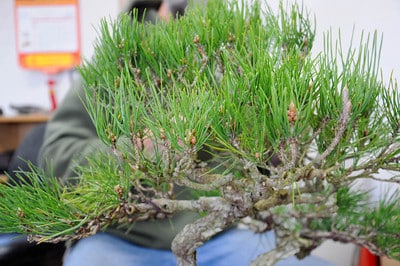
Healthy new foliage
Looking more closely at the branches reveals that the healthy growth is mostly confined to the outside buds. This makes sense as these shoots receive more light than the interior shoots. Wiring the tree is an important step in improving the interior growth as it allows more light to reach these light-deprived shoots.
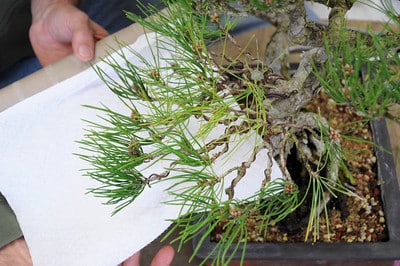
Health growth on the outside, weak growth on the interior branches
A close up of a strong branch and a weak branch are telling. Many healthy needles adorn the strong shoot while anemic yellow needles from the previous year prepare to fall off of the weak shoot. Another sign of recovery are the pollen cones forming on the new shoots. Stressed trees often try to reproduce when they’re near the brink.
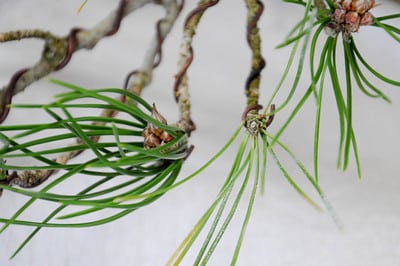
Strong bud, weak bud
Looking at the soil revealed to me a key contributing factor to the tree’s new found health. It looks like old soil has been replaced with new, inorganic soil – a mix of akadama, pumice and lava covered with New Zealand sphagnum to retain extra moisture. It’s impossible to stimulate new foliage until new roots begin to grow, and using good bonsai soil is the best way to wake up old roots.
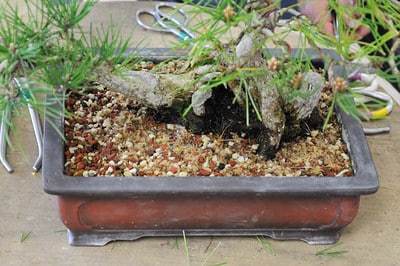
New bonsai soil
I’ll be curious to see how the tree looks a year from now. Wiring the tree will stimulate a lot of new growth, and a few tired, old shoots will likely die off. I expect all of the growth to be fairly vigorous as early as next year.
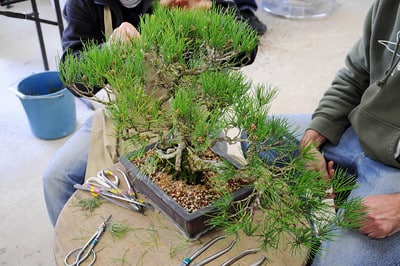
The wiring continues
I’m always encouraged by new signs of health as there are only so many old bonsai around, and not all of them are healthy. It’s also exciting to see improvement because it means that another bonsai enthusiast has learned the basics and is on the way to making beautiful trees.
Subscribe to Bonsai Tonight
New Posts Delivered Every Tuesday and Friday
larbi reda says
merci de votre enseignement cordialement
paul says
did you follow any special feeding program for the repotted pine ?
PS. im really enjoying your articles on pines.
xwires says
Hi Paul – It’s not my tree so I’m not sure, however recovering pines typically get a treatment similar to healthy pines, but with less fertilizer: start feeding the tree around three weeks after repotting and gradually increasing the amount of fertilizer applied without overdoing it. I use organic fertilizers, mostly cottonseed meal and fish emulsion.
Greg says
Thanks for the words of encouragement!
Leo de Leon says
Thank you for the article. Gives me a lot of insight. I am still not giving up on the JBP, will keep on trying to culture them even here in hot tropical weather.
Leo de Leon
Philippines